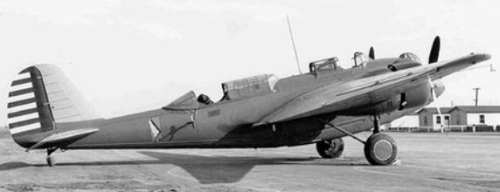
The Martin B-10 was a revolutionary design on the early 30s. It was the first bomber to feature an all-metal construction, with monoplane rather than biplane wings, and retractable undercarriage. Its performance exceeded that of contemporary fighters. In 1936 Martin were given permission to export the design to other countries as the Martin 139WH for the Netherlands and the Martin 139WC for China
Six 139WCs were supplied to China and arrived at Hongqiao airfield in February 1937. These were assigned to the 30th Bombardment Squadron, which would take them into combat during the war with Japan. China’s 139WCs made little impact on the war, failing to score during several attacks on the Japanese 3rd Fleet which was oppressing Shanghai, and gradually the bomber force was reduced by enemy action as well as a number of crashes and accidents.
Three more 139WCs were supplied whilst the conflict was raging, and these were used in an extraordinary mission to drop leaflets expressing outrage at atrocities committed by Japan on the city of Nagasaki – not the last time that city would experience a special bombing mission.
The Nagasaki mission was the 139’s most notable moment in Chinese service. As 1938 unfolded the Chinese bomber force was built up with aircraft supplied by the Soviet Union, and the 139WCs faded from history.
| Martin 139WC | |
| Role | Bomber |
| Crew | 4: Pilot, co-pilot, bombardier, gunner |
| Powerplant | 2x Wright R-1820-G3 Cyclone (875hp) |
| Speed (cruise/max) | 200mph / 230mph |
| Ceiling | 24,300ft |
| Range | 1,350 miles |
| Armament | 3x .30cal machine guns |
| Ordnance | 2,250lb bombs |
| Dimensions (L/W/H) | 44ft 8in / 70ft 6in / 11ft 5in |
| Weight (empty/max) | 9,727lb / 16,455lb |

Leave a Reply